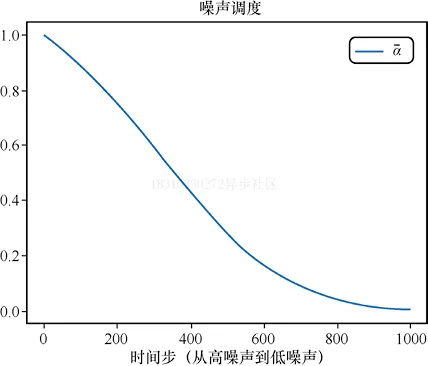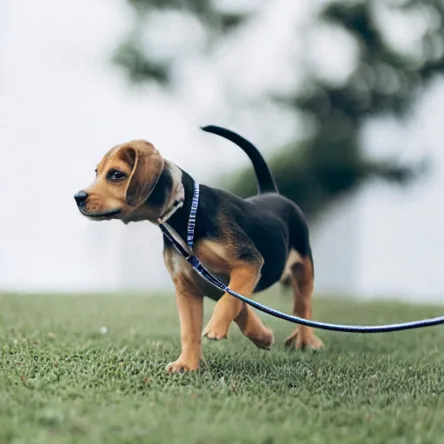
如何快速实现REST API集成以优化业务流程

# !pip install -q transformers diffusers accelerate
import torch
import requests
import torch.nn as nn
import torch.nn.functional as F
from PIL import Image
from io import BytesIO
from tqdm.auto import tqdm
from matplotlib import pyplot as plt
from torchvision import transforms as tfms
from diffusers import StableDiffusionPipeline, DDIMScheduler
# 定义接下来将要用到的函数
def load_image(url, size=None):
response = requests.get(url,timeout=0.2)
img = Image.open(BytesIO(response.content)).convert('RGB')
if size is not None:
img = img.resize(size)
return img
device = torch.device("cuda" if torch.cuda.is_available() else "cpu")加载预训练pipeline并配置DDIM调度器,而后进行一次采样,代码如下:
# 载入一个管线
pipe = StableDiffusionPipeline.from_pretrained("runwayml/stable-
diffusion-v1-5").to(device)
# 配置DDIM调度器
pipe.scheduler = DDIMScheduler.from_config(pipe.scheduler.config)
# 从中采样一次,以保证代码运行正常
prompt = 'Beautiful DSLR Photograph of a penguin on the beach,
golden hour'
negative_prompt = 'blurry, ugly, stock photo'
im = pipe(prompt, negative_prompt=negative_prompt).images[0]
im.resize((256, 256)) # 调整至有利于查看的尺寸
给定任意时刻t,加噪后的图像公式如下所示:

下面是绘制加噪alpha的随时间步的变化:
# 绘制'alpha','alpha'(即α)在DDPM论文中被称为'alpha bar'(即α)。
# 为了能够清晰地表现出来,我们
# 选择使用Diffusers中的alphas_cumprod函数来得到alphas)
timesteps = pipe.scheduler.timesteps.cpu()
alphas = pipe.scheduler.alphas_cumprod[timesteps]
plt.plot(timesteps, alphas, label='alpha_t');
plt.legend();
标准DDIM(https://arxiv.org/abs/2010.02502)采样的实现代码如下所示:
# 采样函数(标准的DDIM采样)
@torch.no_grad()
def sample(prompt, start_step=0, start_latents=None,
guidance_scale=3.5, num_inference_steps=30,
num_images_per_prompt=1, do_classifier_free_ guidance=True,
negative_prompt='', device=device):
# 对文本提示语进行编码
text_embeddings = pipe._encode_prompt(
prompt, device, num_images_per_prompt,
do_classifier_free_guidance, negative_prompt
)
# 配置推理的步数
pipe.scheduler.set_timesteps(num_inference_steps, device=device)
# 如果没有起点,就创建一个随机的起点
if start_latents is None:
start_latents = torch.randn(1, 4, 64, 64, device=device)
start_latents *= pipe.scheduler.init_noise_sigma
latents = start_latents.clone()
for i in tqdm(range(start_step, num_inference_steps)):
t = pipe.scheduler.timesteps[i]
# 如果正在进行CFG,则对隐层进行扩展
latent_model_input = torch.cat([latents] * 2)
if do_classifier_free_guidance else latents
latent_model_input = pipe.scheduler.scale_model_input(latent_
model_input, t)
# 预测残留的噪声
noise_pred = pipe.unet(latent_model_input, t, encoder_hidden_
states=text_embeddings).sample
# 进行引导
if do_classifier_free_guidance:
noise_pred_uncond, noise_pred_text = noise_pred.chunk(2)
noise_pred = noise_pred_uncond + guidance_scale *
(noise_pred_text - noise_pred_uncond)
# 使用调度器更新步骤
# latents = pipe.scheduler.step(noise_pred, t, latents).
# prev_sample
# 现在不用调度器,而是自行实现
prev_t = max(1, t.item() - (1000//num_inference_steps)) # t-1
alpha_t = pipe.scheduler.alphas_cumprod[t.item()]
alpha_t_prev = pipe.scheduler.alphas_cumprod[prev_t]
predicted_x0 = (latents - (1-alpha_t).sqrt()*noise_pred) /
alpha_t.sqrt()
direction_pointing_to_xt = (1-alpha_t_prev).sqrt()*noise_
pred
latents = alpha_t_prev.sqrt()*predicted_x0 + direction_
pointing_to_xt
# 后处理
images = pipe.decode_latents(latents)
images = pipe.numpy_to_pil(images)
return images
# 生成一张图片,测试一下采样函数,效果如图7-4所示
sample('Watercolor painting of a beach sunset', negative_prompt=
negative_prompt, num_inference_steps=50)[0].resize((256, 256))
反转的目标是”颠倒“采样的过程。我们最终想得到”带噪“的隐式表示。如果将其用作采样过程的起点,那么生成的图像将是原始图像。
我们现在首先来加载一张图像,来看看DDIM反转如何做?有什么效果?
#图片来源:https://www.pexels.com/photo/a-beagle-on-green-grass-
# field-8306128/(代码中使用对应的JPEG文件链接)
input_image = load_image('https://images.pexels.com/photos/
8306128/pexels-photo-8306128.jpeg', size=(512, 512))
我们使用一个包含无分类器引导的文本Prompt来进行反转操作,代码如下:
input_image_prompt = "Photograph of a puppy on the grass"接下来,我们将这幅PIL图像转换为一系列隐式表示,这些隐式表示将被用作反转操作的起点。
# 使用VAE进行编码
with torch.no_grad(): latent = pipe.vae.encode(tfms.functional.to_
tensor(input_image).unsqueeze(0).to(device)*2-1)
l = 0.18215 * latent.latent_dist.sample()我们使用invert函数进行反转,可以看出invert与上面的sample函数非常类似,但是invert函数是朝相反的方向移动的:从t=0开始,想噪声更多的方向移动的,而不是在更新隐式层的过程中那样噪声越来越少。我们可以利用预测的噪声来撤回一步更新操作,并从t移动到t+1。
## 反转
@torch.no_grad()
def invert(start_latents, prompt, guidance_scale=3.5,
num_inference_steps=80,num_images_per_prompt=1,
do_classifier_free_guidance=True, negative_prompt='',
device=device):
# 对提示文本进行编码
text_embeddings = pipe._encode_prompt(
prompt, device, num_images_per_prompt,
do_classifier_free_guidance, negative_prompt
)
# 已经指定好起点
latents = start_latents.clone()
# 用一个列表保存反转的隐层
intermediate_latents = []
# 配置推理的步数
pipe.scheduler.set_timesteps(num_inference_steps,device=device)
# 反转的时间步
timesteps = reversed(pipe.scheduler.timesteps)
for i in tqdm(range(1, num_inference_steps), total=num_
inference_steps-1):
# 跳过最后一次迭代
if i >= num_inference_steps - 1: continue
t = timesteps[i]
# 如果正在进行CFG,则对隐层进行扩展
latent_model_input = torch.cat([latents] * 2) if do_
classifier_free_guidance else latents
latent_model_input = pipe.scheduler.scale_model_
input(latent_model_input, t)
# 预测残留的噪声
noise_pred = pipe.unet(latent_model_input, t, encoder_
hidden_states=text_embeddings).sample
# 进行引导
if do_classifier_free_guidance:
noise_pred_uncond, noise_pred_text = noise_pred.chunk(2)
noise_pred = noise_pred_uncond + guidance_scale *
(noise_pred_text - noise_pred_uncond)
current_t = max(0, t.item() - (1000//num_inference_steps))#t
next_t = t # min(999, t.item() + (1000//num_inference_steps)) # t+1
alpha_t = pipe.scheduler.alphas_cumprod[current_t]
alpha_t_next = pipe.scheduler.alphas_cumprod[next_t]
# 反转的更新步(重新排列更新步,利用xt-1(当前隐层)得到xt(新的隐层))
latents = (latents - (1-alpha_t).sqrt()*noise_pred)*(alpha_t_next.
sqrt()/alpha_t.sqrt()) + (1-alpha_t_next).sqrt()*noise_pred
# 保存
intermediate_latents.append(latents)
return torch.cat(intermediate_latents)将invert函数应用于上述小狗的图片,得到图片的一系列隐式表示。
inverted_latents = invert(l, input_image_prompt,num_inference_steps=50)
inverted_latents.shape# 输出
torch.Size([48, 4, 64, 64])
将得到的最终隐式表示作为起点噪声,尝试新的采样过程。
# 解码反转的最后一个隐层
with torch.no_grad():
im = pipe.decode_latents(inverted_latents[-1].unsqueeze(0))
pipe.numpy_to_pil(im)[0]通过调用call方法将反转隐式表示输入给Pipeline。
pipe(input_image_prompt, latents=inverted_latents[-1][None],
num_inference_steps=50, guidance_scale=3.5).images[0]
看到生成的图片是不是有点蒙了,这不是刚开始输入的图片呀?
这是因为DDIM反转需要一个重要的假设-在时刻t预测的噪声与在时刻t+1预测的噪声相同,但这个假设在反转50步或100步是不成立的。
我们既可以使用更多的时间步来得到更准确的反转,也可以采取”作弊“的方法,直接从相应反转过程50步中的第20步的隐式表示开始。
# 设置起点的原因
start_step=20
sample(input_image_prompt, start_latents=inverted_latents[-(start_step+1)]
[None], start_step=start_step, num_inference_steps=50)[0]
经过这一折腾,生成的图片和原始图片很接近了,那为什么要这么做呢?
因为我们现在想用一个新的文本Prompt来生成图片。我们想要得到一张除了与Prompt相关以外,其他内容都与原始图片大致相同的图片。例如,将小狗换成小猫,得到的结果如下所示:
# 使用新的文本提示语进行采样
start_step=10
new_prompt = input_image_prompt.replace('puppy', 'cat')
sample(new_prompt, start_latents=inverted_latents[-(start_step+1)]
[None],start_step=start_step, num_inference_steps=50)[0]
到此为止,读者可能有一些疑问,比如为什么不直接使用Img2Img?为什么要反转?为什么不直接对输入图像添加噪声,然后用新的Prompt直接”去噪“呢?
其实是可以采用上述方法做的,但是生成的效果对添加的噪声量十分敏感,噪声量大时会生成十分夸张的图片,噪声量小时生成的图片几乎没有变化。
start_step = 10
num_inference_steps=50
pipe.scheduler.set_timesteps(num_inference_steps)
noisy_l = pipe.scheduler.add_noise(l, torch.randn_like(l), pipe.
scheduler.timesteps[start_step])
sample(new_prompt, start_latents=noisy_l, start_step=start_step,
num_inference_steps=num_inference_steps)[0]
将上述代码封装到一个简单函数中,并输入一张图片和两个文本Prompt,便可以得到一张通过反转修改后的图片。
def edit(input_image, input_image_prompt, edit_prompt, num_steps=100,
start_step=30,guidance_scale=3.5):
with torch.no_grad(): latent = pipe.vae.encode(tfms.functional.
to_tensor(input_image).unsqueeze(0).to(device)*2-1)
l = 0.18215 * latent.latent_dist.sample()
inverted_latents = invert(l, input_image_prompt,num_inference_
steps=num_steps)
final_im = sample(edit_prompt, start_latents=inverted_latents[
-(start_step+1)][None],start_step=start_step, num_inference_
steps=num_steps,guidance_scale=guidance_scale)[0]
return final_im
And in action: # 实际操作
edit(input_image, 'A puppy on the grass', 'an old grey dog on
the grass', num_steps=50,start_step=10) 
修改一下Prompt和参数来看看效果如何不同
edit(input_image, 'A puppy on the grass', 'A blue dog on the lawn',
num_steps=50,start_step=12, guidance_scale=6) 得到如下图片

更多迭代能够得到更好的表现,我们可以测试一下
# 更多步的反转测试
edit(input_image, 'A puppy on the grass', 'A puppy on the grass',
num_steps=350, start_step=1)
我们换一张图片进行测试一下看看效果
原始图片如下所示:

# 图片来源:https://www.pexels.com/photo/girl-taking-photo-1493111/
# (代码中使用对应的JPEG文件链接)
face = load_image('https://images.pexels.com/photos/1493111/pexels-
photo-1493111.jpeg', size=(512, 512))edit(face, 'A photograph of a face', 'A photograph of a face with
sunglasses', num_steps=250, start_step=30, guidance_scale=3.5)生成的效果如下所示:

PS:读者可以通过测试不同的Prompt来观察生成的效果,强烈建议了解一下Null-text Inversion:一个基于DDIM来优化空文本(无条件Prompt)的反转过程,有更准确的反转过程与更好的编辑效果。
文章转自微信公众号@ArronAI